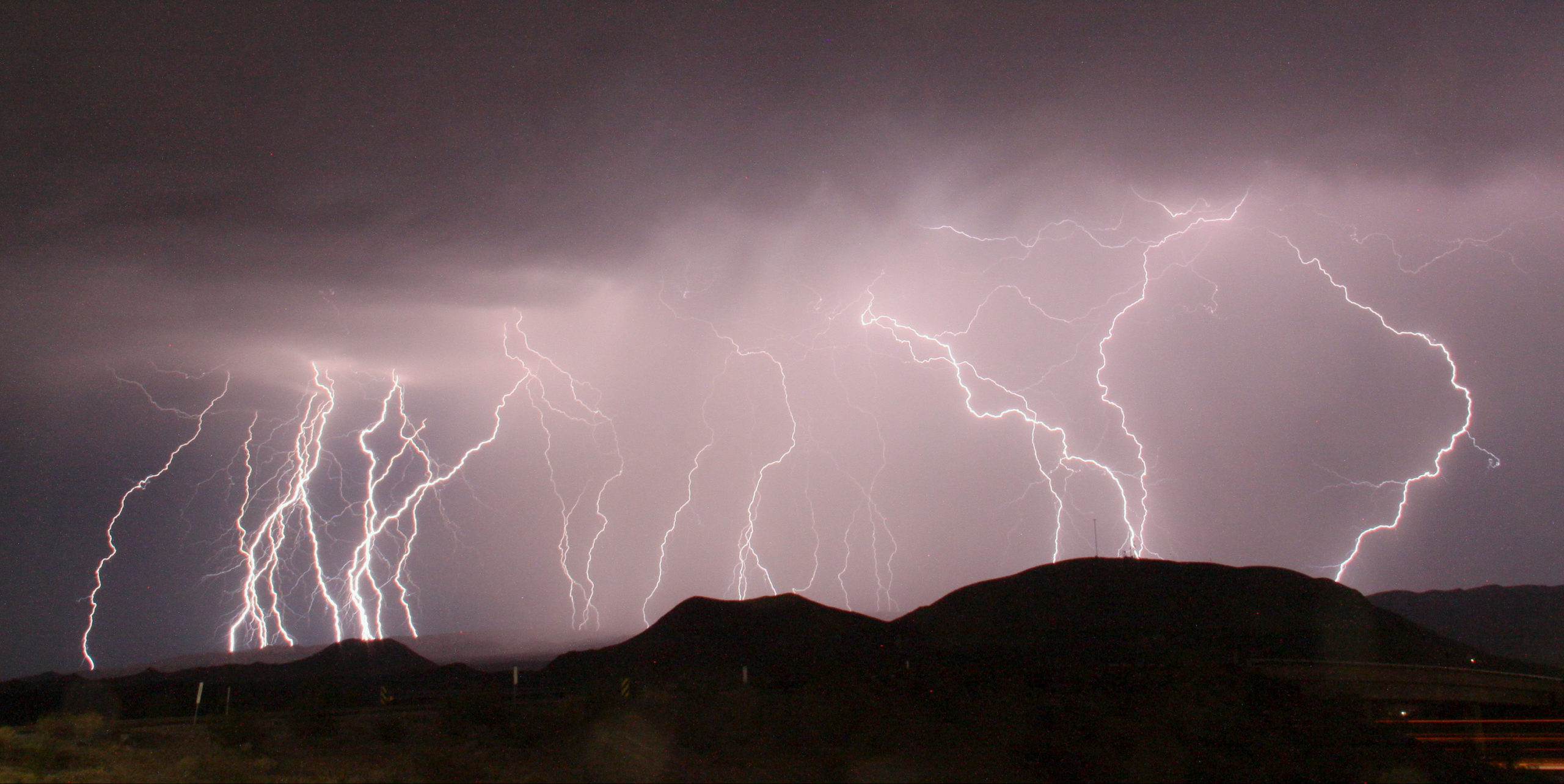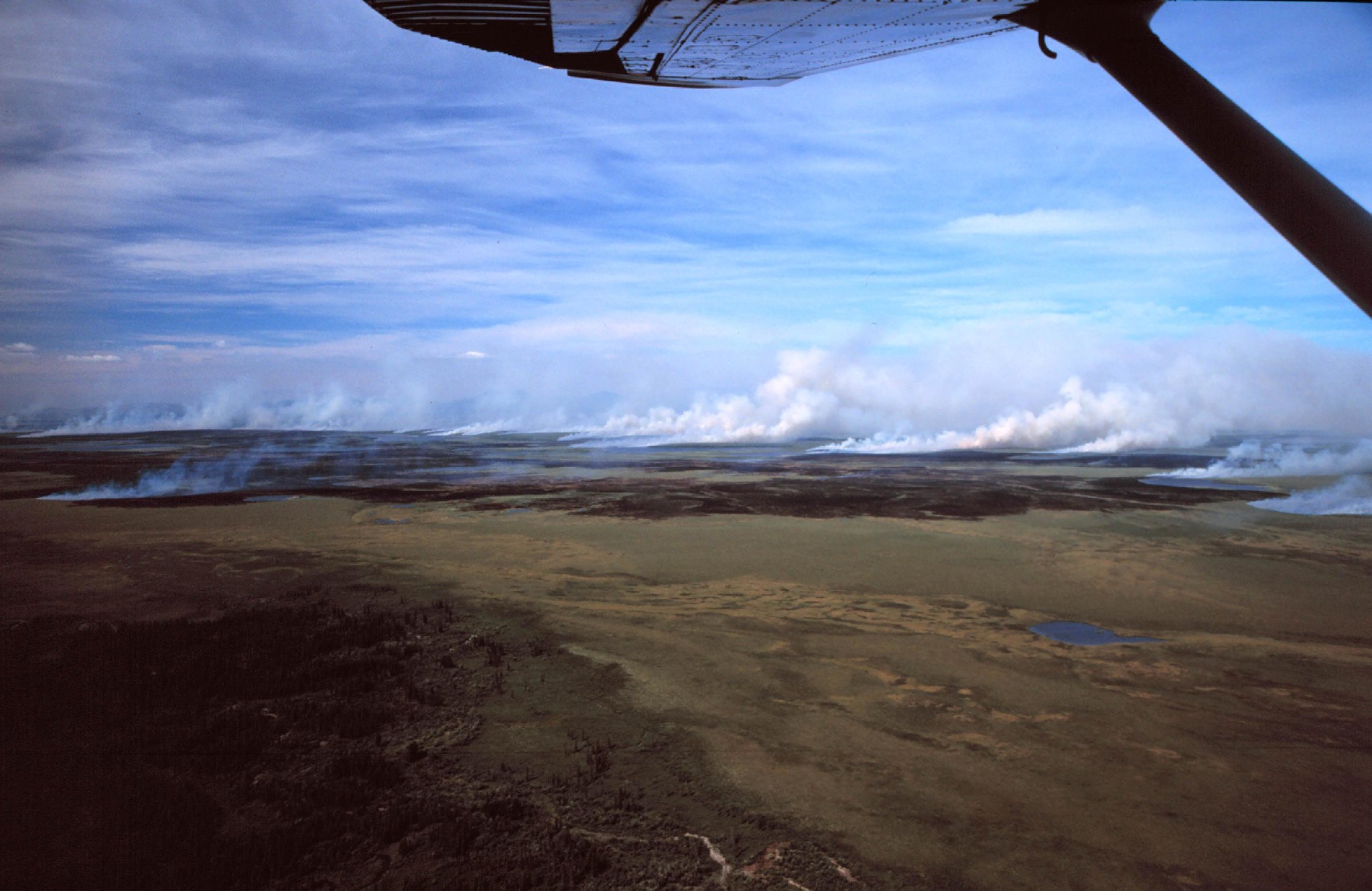Arctic lightning has tripled since 2010, thanks to rapid warming
Lightning is still relatively rare in the Arctic, but it's getting much more common.

In a single decade, summer lightning tripled across the Arctic, a change directly attributed to rapid Arctic warming, a new scientific paper reports.
“Now that we have Arctic warming, you can really get a lot more of the optimal conditions for thunderstorms,” said Robert Holzworth, a University of Washington professor emeritus of Earth and space sciences, lead author of the study published in the journal Geophysical Research Letters.
Compared to other parts of the world, lightning is relatively rare in the Arctic; it’s difficult for snow- and ice-covered terrain to produce the convective heat that results in thunderstorms. But the real-world data shows a dramatic increase above Latitude 65.
In 2010, summer lightning strokes in the Arctic accounted for 0.2 percent of the global total. Ten years later, that percentage was 0.6 percent, the study found. During the period, worldwide lightning strokes remained pretty constant, so it was the Arctic strokes that increased, Holtzworth said.
Holzworth uses the term lightning “strokes” — which are the individual cloud-to-cloud or cloud-to-ground transfers of electric charges — instead of the less-precise and more general term “strikes.” Strikes encompass both strokes, which occur too quickly to be counted by the human eye, and flashes, which he describes as multiple strokes occurring between nearly the same starting and ending points.
[Alaska thunderstorms could triple if climate trends continue, scientists warn]
The ability to quantify strokes comes thanks to a relatively new global array of stations recording lightning events — the University of Washington’s World Wide Lightning Location Network.
The Arctic lightning study’s time series is limited to 10 years because the lightning location network is so new, dating back to only 2004, Holzworth said.
In the Arctic, lightning is concentrated on land, he noted. That makes Siberia, with so much land north of the Arctic Circle, a hotbed for it. Lightning is also common in Interior Alaska and much of Canada’s Arctic, where in summer it is “pounding away at those boreal forests,” he said.
Lightning drives Arctic wildfires, such as those that burned last summer over vast stretches of Siberia. Lightning-sparked Arctic wildfires burn not just boreal forests but also sections of peat and treeless tundra.

In contrast, places that are snowy or icy year-round or nearly year-round — sites such as the Canadian Arctic Archipelago or the higher elevations of Greenland — have rarely produced the kind of heat that creates thunderstorms, Holzworth said.
But the data shows that there is more lightning even in many places that have not had a lot of it in the past, Holzworth said.
Lightning has even struck near the North Pole. On Aug. 13, 2019, 28 strokes were detected within 100 kilometers of the North Pole, according to the study.
[Meteorologists just spotted lightning strikes near the North Pole]
With warming making lightning more likely, there should be more attention in the Arctic to lightning safety, Holzworth said.
Hazards include deaths from direct strikes. An average 49 people a year in the U.S. are killed by lightning strikes and hundreds more are injured, according to the National Weather Service. The numbers are far greater in other nations, such as India, where annual deaths are reported in the thousands.
Lighting also poses hazards to infrastructure, property and commerce. Holzworth said he believes the ships that are traveling in increasingly ice-free Arctic waters could be at risk from increased lightning.
The study of lightning increases from 2010 to 2020 parallels recent studies by scientists at the National Center for Atmospheric Research that predict tripling of Alaska thunderstorms through the end of the century.
Holzworth said he has not closely evaluated those NCAR studies, which use modeling to project into the future, but he believes they are on the right track. “I totally agree in principle that there’ll be increased lightning,” he said.
His study focuses on what has actually happened — “the strokes that we’ve identified in high latitudes,” he said. Still, it includes its own projection: There will be twice as much lightning in the Arctic by the end of the century.
That is based on simple arithmetic, a slight-line projection factoring in expected global temperature increases. And when it comes to Arctic warming, such a projection is likely to be conservative, he said. “I think it’ll be accelerating. It won’t just be a linear trend,” he said.